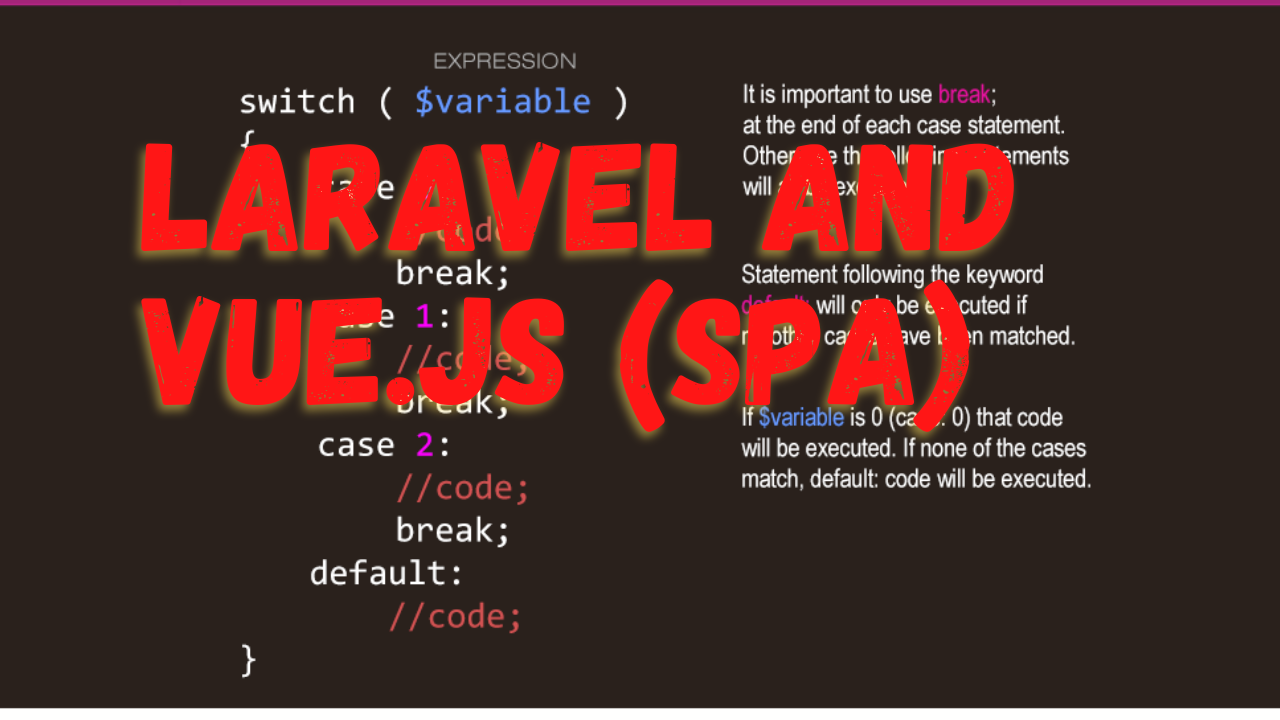Combining Laravel and Vue.js to create a Single Page Application (SPA) offers a robust solution for fast, interactive user interfaces with an efficient backend. This guide will walk you through the process of building an SPA using Laravel as the API backend and Vue.js as the frontend framework.
Why Choose Laravel with Vue.js?
Laravel provides powerful backend capabilities with its expressive, elegant syntax making it a top choice for building web applications. Vue.js is a progressive JavaScript framework used to build interactive UIs. Together, they make an excellent pair for developing SPAs because of their scalability, flexibility, and the modern tools they bring to the table.
Step 1: Setting Up Laravel
-
Create a New Laravel Project If you haven’t already, start by creating a new Laravel project:
composer create-project --prefer-dist laravel/laravel LaravelVueApp -
Set Up the Database Edit your
.envfile to configure the database settings:DB_CONNECTION=mysql DB_HOST=127.0.0.1 DB_PORT=3306 DB_DATABASE=your_database DB_USERNAME=your_username DB_PASSWORD=your_password -
Create Models and Migrations Use Artisan to create necessary models and migrations for your data:
php artisan make:model Item -mThen define your database structure in the migration file and migrate:
php artisan migrate
Step 2: Building the API
-
Create Routes Define the API routes in
routes/api.php:Route::apiResource('items', 'ItemController'); -
Create the Controller Generate a controller for handling the API requests:
php artisan make:controller API/ItemController --apiImplement the methods to handle CRUD operations.
-
Test Your API Ensure your API works correctly using tools like Postman or by writing tests in Laravel.
Step 3: Integrating Vue.js
-
Install Vue Laravel Mix makes it straightforward to set up Vue in your project:
npm install npm install vue -
Set Up Vue Components Create Vue components in
resources/js/components. For example, createItemsComponent.vue:<template> <div> <item v-for="item in items" :key="item.id">{{ item.name }}</item> </div> </template> <script> export default { data() { return { items: [] } }, created() { axios.get('/api/items').then(response => { this.items = response.data; }); } } </script> -
Compile Assets Use Laravel Mix to compile your JavaScript and Vue files:
npm run dev -
Modify the Blade View Edit the main Blade template to include the Vue component:
<div id="app"> <items-component></items-component> </div> <script src="{{ mix('js/app.js') }}"></script>
Step 4: Running Your SPA
-
Serve the Application Start the Laravel server:
php artisan serve -
Access Your SPA Open your browser and navigate to the URL provided by the Laravel development server. You should see your Vue.js SPA in action, powered by Laravel's backend.
Conclusion
Building a SPA with Laravel and Vue.js is a powerful combination for creating modern, responsive web applications. Laravel handles the data and API layer with ease, while Vue.js brings your user interface to life. By following this guide, you can set up a robust SPA that leverages the best of both frameworks.
This blog post provides developers with a detailed roadmap for integrating Laravel with Vue.js to build efficient and scalable single-page applications, emphasizing modern web development practices.




